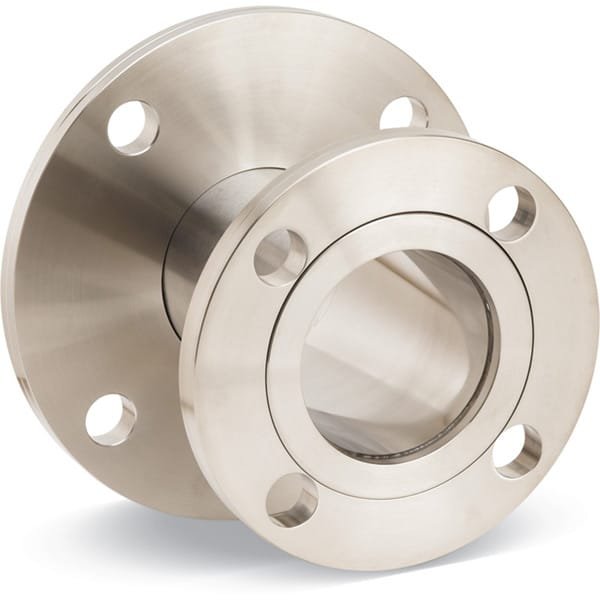ASA HV Reducer Full Nipples (Flat Flanges): Size-Reducing Spools for ASA Grooved Flange Interfaces in High-Vacuum Systems
ASA HV Reducer Full Nipples (Flat Flanges) from TFM are precision-fabricated components designed to enable secure size transitions between dissimilar ASA flanges in high-vacuum (HV) applications. Constructed from 304L stainless steel tubing, these full nipples combine mechanical durability, vacuum-grade cleanliness, and corrosion resistance.
Each nipple is equipped with two rotatable flat ASA flanges, designed specifically to mate with grooved ASA flanges that contain elastomeric o-rings. This ensures compatibility with the sexed ASA flange standard, allowing for leak-tight sealing in systems that use o-ring compression between flat and grooved flanges.
The reducer configuration provides a streamlined solution for adapting between different ASA sizes (e.g., 10″ to 6″, 6″ to 4″) without requiring bulky adapters or multiple fittings.
Key Features of ASA HV Reducer Full Nipples (Flat Flanges):
Dual Flat ASA Flanges
Allows secure mating with grooved ASA flanges using standard elastomeric o-rings for vacuum sealing down to 10⁻⁸ Torr.Reducer Design
Enables seamless connection between two different ASA flange sizes, ideal for system expansions, port resizing, or hybrid interface layouts.304L Stainless Steel Build
Offers excellent resistance to corrosion, high-temperature cycling, and harsh chemical environments typical in vacuum processes.Rotatable Flanges for Easy Alignment
Both flat flanges are rotatable, facilitating quick, precise installation and optimal flange orientation during system integration.Vacuum Cleaned & Leak Tested
Each ASA HV Reducer Full Nipple (Flat Flanges) is helium leak tested and cleaned to meet stringent HV standards.Standard & Custom Configurations Available
TFM offers common reducer combinations and lengths. Custom tube lengths, diameters, wall thicknesses, and flange pairings can be manufactured upon request.
Applications:
Step-down or step-up connections in ASA-flanged HV systems
Pumping lines or chamber ports requiring flange size conversion
Retrofitting vacuum systems with dissimilar ASA interface points
Custom instrumentation or gas routing modules
Modular upgrades in research, aerospace, and semiconductor vacuum setups
To support full integration, TFM also provides matching grooved ASA flanges, o-rings (FKM, Buna-N), bolt sets, and blank flanges.
In summary, ASA HV Reducer Full Nipples (Flat Flanges) offer vacuum engineers a dependable, compact solution for size-matching ASA components with grooved flange terminations. Their dual-flat design ensures reliable sealing and smooth integration into high-vacuum environments.





Reviews
There are no reviews yet.